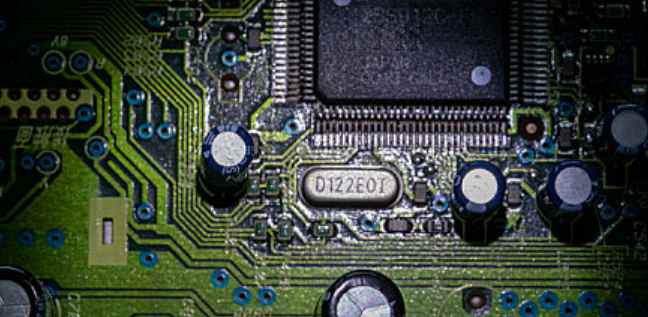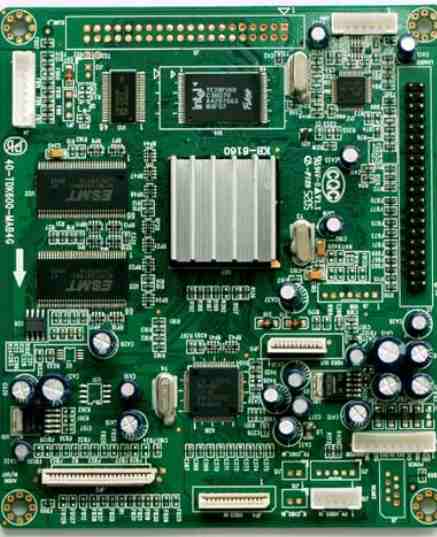
Обзор мирового рынка печатных плат
1. Масштаб отрасли
Индустрия печатных плат - это отрасль с наибольшим объемом производства в мировой отрасли подразделений электронных компонентов. С углублением исследований и разработок и постоянным совершенствованием технологий продукты для печатных плат постепенно развиваются в направлении высокой плотности, малой апертуры, большой емкости, тонких и легких. В 2015 и 2016 годах мировое производство ПХД немного увеличилось, но стоимость производства ПХД, выраженная в долларах США, немного снизилась под влиянием значительного обесценивания иены и евро по сравнению с долларом США и другими факторами. Согласно статистике
По данным Prismark, общая стоимость производства мировой индустрии печатных плат достигла 62,396 млрд долларов в 2018 году, увеличившись на 6,0% в годовом исчислении. По данным Prismark, мировой рынок печатных плат будет поддерживать умеренный рост в ближайшие пять лет. Интернет вещей, автомобильная электроника, индустрия 4.0, облачные серверы, устройства хранения данных и т. д. станет новым направлением, стимулирующим рост спроса на печатные платы.
2. Market distribution
The PCB industry is widely distributed in the world. Developed countries in Europe and the United States started early, developed and made full use of advanced technology and equipment, so the PCB industry has achieved considerable development. In the past two decades, relying on the advantages of Asia, especially China, in labor, resources, policies, industrial clustering and other aspects, the global electronics manufacturing capacity has been transferred to China, Taiwan, South Korea and other Asian regions. With the shift of global industrial center to Asia, PCB industry presents a new pattern of manufacturing center in Asia, especially in mainland China. Since 2006, China has surpassed Japan and become the world's largest PCB producer, with both output and output value ranking first in the world. In recent years, the global economy has been in a period of deep adjustment, and the driving role of major economies such as Europe, the United States and Japan to world economic growth has been significantly weakened, and their PCB market has seen limited growth or even contraction. China is increasingly integrated with the global economy, and gradually occupies half of the global PCB market.
Note: SEA/ROW represents Southeast Asia/other countries and regions worldwide.
As the largest producer of PCB industry in the world, China accounted for 52.4% of the total output value of the global PCB industry from 8.1% in 2000 to 52.4% in 2018. The output value of America, Europe and Japan declined sharply, while the PCB industry in mainland China and other parts of Asia (mainly South Korea, Taiwan and Southeast Asia) developed rapidly.
3. Development trend
Under the current environment of global economic recovery, the demand of communication electronics industry and consumer electronics industry is relatively stable. Meanwhile, the new demand of downstream markets such as Automotive electronics and medical devices is increasing year by year. According to Prismark, the output value of the global PCB industry will continue to grow steadily in the next five years, with a compound growth rate of 3.7% from 2018 to 2023, and the output value of the global PCB industry will reach $74.756 billion in 2023.

Prismark forecasts that Asia will continue to dominate the global PCB market in the next five years, while China's core position is more firmly established. The PCB industry in mainland China will maintain a compound growth rate of 4.4%, reaching a total industry output value of $40.556 billion by 2023. Under the trend of "large-scale and centralized" PCB companies, the large PCB companies that have established the leading edge early will gain a greater advantage in the future global market competition.
4. Product structure of global PCB segmentation
According to Prismark, the global market structure of PCB segment products in 2018 is as follows:
From the perspective of product structure, rigid board still occupies the mainstream position in the current PCB market, in which multi-layer board accounts for 39.4%, single and double panel accounts for 4.9%; Followed by flexible plate, accounting for 19.9%; HDI board and package substrate accounted for 14.8% and 12.1%, respectively.
With the rapid development of electronic circuit industry technology, component integration function is increasingly extensive, electronic products for PCB high density requirements more prominent. In the next five years, driven by the data processing center, packaging substrate, multilayer board will grow rapidly. According to Prismark, packaged substrates will grow at an annual compound growth rate of 4.9% between 2018 and 2023, leading the PCB industry. The composite growth rate for multilayer panels is expected to be 4.3%.
5. Global PCB downstream application field
The global PCB downstream application market is widely distributed, mainly including communication, computer, consumer electronics, automotive electronics, industrial control, military aviation, medical equipment and other fields. According to Prismark, the global distribution of PCB downstream applications in 2018 is as follows:
The vigorous development of electronic information industry is an important boost to the development of PCB industry. In terms of the distribution of downstream application fields, PCB market scale of communication industry was the largest in 2018, accounting for about 33.4%. The computer industry is next, accounting for about 29.4 percent. Other sectors with large PCB market scale are consumer electronics and automotive electronics.
6, the world's leading PCB enterprises
The global PCB industry is mainly distributed in China, Taiwan, Japan, South Korea, Europe and the United States. With the transfer of global PCB production capacity to China in recent years, China has become the world's largest PCB industry output region.
Global PCB industry concentration is not high, many manufacturers, the market competition is full. Although the PCB industry has a tendency to focus on the dominant enterprises, it will still maintain a relatively dispersed competition pattern in the future for a long time. According to the 2018 World Top 100 PCB Companies list released by N.T.I. Formation, the total revenue of the top 10 PCB manufacturers in 2018 was 21.151 billion US dollars. The sales of the top 10 PCB manufacturers in the world in 2018 are as follows:






